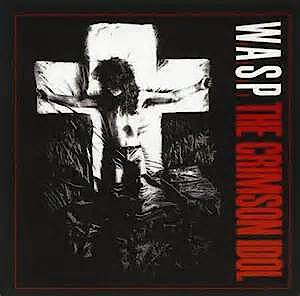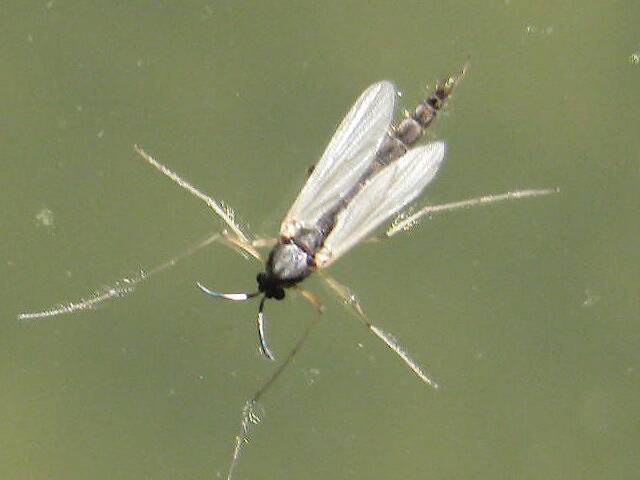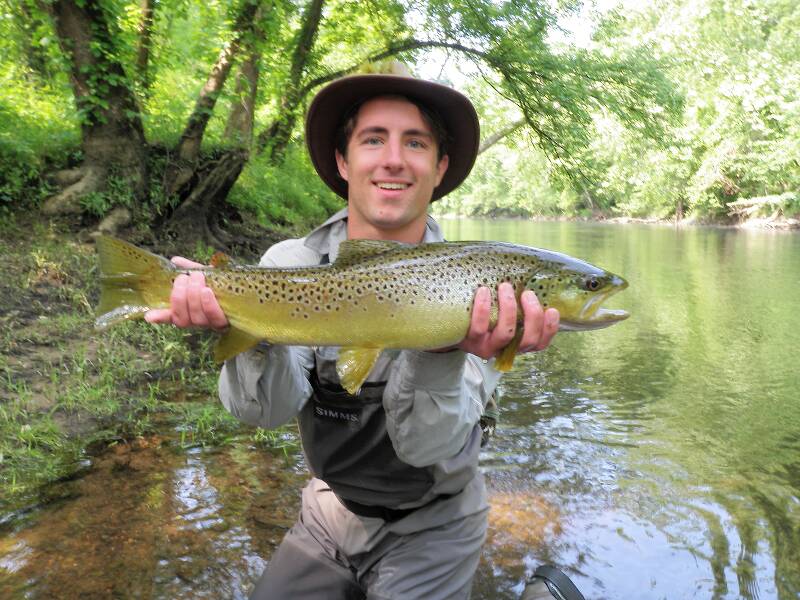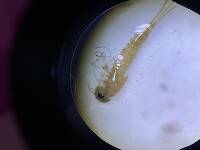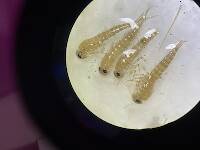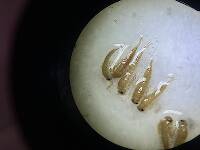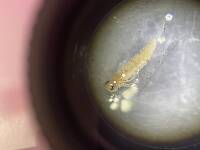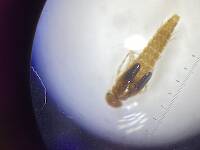
Hex Mayflies
Hexagenia limbata
The famous nocturnal Hex hatch of the Midwest (and a few other lucky locations) stirs to the surface mythically large brown trout that only touch streamers for the rest of the year.
Featured on the forum

Troutnut is a project started in 2003 by salmonid ecologist Jason "Troutnut" Neuswanger to help anglers and
fly tyers unabashedly embrace the entomological side of the sport. Learn more about Troutnut or
support the project for an enhanced experience here.
Adirman on Apr 15, 2011April 15th, 2011, 11:56 pm EDT
Guys;
Been using the prince nymph for a # of years but was recently wondering what its sopposed to look like exactly? Is it more of a caddis/mayfly nymph or stonefly? Perhaps both?? Also, I've never seen that much difference between the prince pattern and the way some pheasant tails are tied. Does it make much difference do you think which is used in many cases?
Been using the prince nymph for a # of years but was recently wondering what its sopposed to look like exactly? Is it more of a caddis/mayfly nymph or stonefly? Perhaps both?? Also, I've never seen that much difference between the prince pattern and the way some pheasant tails are tied. Does it make much difference do you think which is used in many cases?
Adirman on Apr 16, 2011April 16th, 2011, 4:01 am EDT
Sorry, I meant the Zugbug looks alot like a Prince, not the pheasant tail.
Taxon on Apr 16, 2011April 16th, 2011, 6:15 am EDT
Been using the prince nymph for a # of years but was recently wondering what its sopposed to look like exactly?
Well Adirman, your question is likely to attract a diversity of opinions. The Prince Nymph pattern is what I would term an attractor nymph, as it doesn't really look exactly like any particular aquatic insect. However, because of it's highly generalized appearance, and depending on its size and how it is fished, it could easily be taken for a wide variety of aquatic insects, such as a stonefly, a sowbug, a backswimmer, etc. Of course, the same can be said of a Zug Bug, which you also mention.
Falsifly on Apr 16, 2011April 16th, 2011, 10:15 am EDT
I would concur with Taxon on categorizing the Prince nymph as an attractor by impressionistic means, with little realistic imitative form. There was a time when I fished the Prince with regularity, and found it readily taken by some very nice fish. However, it was fished most successfully, by me, when presented in more of a wet fly fashion. I really don’t recall many takes on the dead drift, but when the swing started to develop, it was hammered. I would be interested to know if others have found the same to be true. I have since left the Prince in forlorn to other patterns, but maybe it’s time to reacquaint an old favorite. I’ve got a stack of fly boxes I haven’t opened in years, and I’m sure my Princes reside in their midst. It will be interesting in what I may find, but fond memories of the past will surely emerge.
Falsifly
When asked what I just caught that monster on I showed him. He put on his magnifiers and said, "I can't believe they can see that."
When asked what I just caught that monster on I showed him. He put on his magnifiers and said, "I can't believe they can see that."
Adirman on Apr 16, 2011April 16th, 2011, 11:39 am EDT
Times when I've used the prince, I would say that the dead-drift was very productive as was the wet-fly swing; however, you may be right. Would be worth experimenting a bit! thanks for the input!!
Jesse on Apr 18, 2011April 18th, 2011, 2:21 am EDT
Traditional nymph man it could be an array of different bugs. Just like the ole HARES EAR or PHEASANT TAIL.
Most of us fish our whole lives..not knowing its not the fish that we are after.
http://www.filingoflyfishing.com
http://www.filingoflyfishing.com
Troutnut on Apr 18, 2011April 18th, 2011, 8:10 am EDT
I'd say it's just an attractor, too.
I've heard it compared to an Isonychia nymph, because the iridescent dark peacock herl similar to their bodies, and the white wing is similar to their white dorsal stripe, although that stripe is rarely so bright white and never so prominent on the real nymphs.
A backswimmer is a good guess, too, because of their white side and legs that stick out while swimming sort of like the prince nymph's wings.
Of course, it seems pretty unlikely that the fish take the nymph thinking it is one of those things. But an attractor nymph might be especially effective if it has one or two characteristics in common with a realistic food, so the very minor resemblance to those insects might help it there a little bit in streams where they're common food.
I've heard it compared to an Isonychia nymph, because the iridescent dark peacock herl similar to their bodies, and the white wing is similar to their white dorsal stripe, although that stripe is rarely so bright white and never so prominent on the real nymphs.
A backswimmer is a good guess, too, because of their white side and legs that stick out while swimming sort of like the prince nymph's wings.
Of course, it seems pretty unlikely that the fish take the nymph thinking it is one of those things. But an attractor nymph might be especially effective if it has one or two characteristics in common with a realistic food, so the very minor resemblance to those insects might help it there a little bit in streams where they're common food.
Jason Neuswanger, Ph.D.
Troutnut and salmonid ecologist
Troutnut and salmonid ecologist
Adirman on Apr 18, 2011April 18th, 2011, 9:24 am EDT
Thank you all for your input, but let me pose another?: What's the Zug Bug sopposed to be then? Is it just another variation of a prince-like attractor pattern or is it supposed to be fairly specific?
Taxon on Apr 18, 2011April 18th, 2011, 10:55 am EDT
Adirman-
Already answered.
Already answered.
Of course, the same can be said of a Zug Bug, which you also mention.
Adirman on Apr 18, 2011April 18th, 2011, 11:52 am EDT
You're right. Sorry! Let me ask another way then: if I were to use Zug Bugs EXCLUSIVELY in situations in which I used to use a Prince, do you think I would get the same results then, in terms of success rate, considering they're both variations on the same theme of attractor pattern?
Taxon on Apr 18, 2011April 18th, 2011, 12:32 pm EDT
Adirman-
No, you would be likely to have much better results using a Prince Nymph; just because you have more confidence in it.
You're right. Sorry! Let me ask another way then: if I were to use Zug Bugs EXCLUSIVELY in situations in which I used to use a Prince, do you think I would get the same results then, in terms of success rate, considering they're both variations on the same theme of attractor pattern?
No, you would be likely to have much better results using a Prince Nymph; just because you have more confidence in it.
Entoman on Apr 18, 2011April 18th, 2011, 4:10 pm EDT
Hi all -
Interesting thread guys. Here's my two cents:
It's really not an either/or with these two.
Out in my neck of the woods the Zug tends to be a Spring fly and has always been popular for use when fish are "picking the drift" of snails, scuds, Grannom cases, Green Drakes, you name it; just adjust the size. Most effective deeply fished dead drift or retrieved slowly in stillwater on inclement days. It's just one of those great all time buggy looking flies. Peacock is magic....
The prince is opposite, being most effective in the larger sizes swung as an attractor. Under tension it looks very similar to the old Coachman wet fly, and probably works for similar reasons. Jason is right that the glaring white wing being taken for the stripe on an Isonychia nymph is highly dubious. More likely a small flashy minnow if anything at all. I knew very few top anglers that used them below size 10, this angler included. The intro of bead-heads changed all that, and they quickly became the "go to" fly for the indicator guys, particularly in the smaller sizes (14 -18). Most places the fish are getting tired of them from the last 15 years of hammering, hence the Psycho Princes and what-have-you. I don't use the small beaded ones much anymore.
Since the big un-beaded ones and the Zug have long since fallen out of favor, the fish are back into them. I use both quite often when the whim catches me and the conditions are right. But as I said earlier, for entirely different reasons.
Regards,
Kurt
Interesting thread guys. Here's my two cents:
It's really not an either/or with these two.
Out in my neck of the woods the Zug tends to be a Spring fly and has always been popular for use when fish are "picking the drift" of snails, scuds, Grannom cases, Green Drakes, you name it; just adjust the size. Most effective deeply fished dead drift or retrieved slowly in stillwater on inclement days. It's just one of those great all time buggy looking flies. Peacock is magic....
The prince is opposite, being most effective in the larger sizes swung as an attractor. Under tension it looks very similar to the old Coachman wet fly, and probably works for similar reasons. Jason is right that the glaring white wing being taken for the stripe on an Isonychia nymph is highly dubious. More likely a small flashy minnow if anything at all. I knew very few top anglers that used them below size 10, this angler included. The intro of bead-heads changed all that, and they quickly became the "go to" fly for the indicator guys, particularly in the smaller sizes (14 -18). Most places the fish are getting tired of them from the last 15 years of hammering, hence the Psycho Princes and what-have-you. I don't use the small beaded ones much anymore.
Since the big un-beaded ones and the Zug have long since fallen out of favor, the fish are back into them. I use both quite often when the whim catches me and the conditions are right. But as I said earlier, for entirely different reasons.
Regards,
Kurt
"It's not that I find fishing so important, it's just that I find all other endeavors of Man equally unimportant... And not nearly as much fun!" Robert Traver, Anatomy of a Fisherman
Jmd123 on Apr 18, 2011April 18th, 2011, 6:57 pm EDT
Maybe it's just me, folks, or maybe I just tend to fish, how do you say, less-pressured waters, but this whole "they have fallen out of favor for a while so fish are hitting them again" mentality about fly choice just kinda cracks me up. I can imagine:
"You know, I've been finning through these waters for a good thirty or so years now, and I haven't seen a Zug Bug since I was a parr! I wonder if they still have hooks in 'em? Maybe I'll taste the next one to come along and find out!"
Jonathon
"You know, I've been finning through these waters for a good thirty or so years now, and I haven't seen a Zug Bug since I was a parr! I wonder if they still have hooks in 'em? Maybe I'll taste the next one to come along and find out!"
Jonathon
No matter how big the one you just caught is, there's always a bigger one out there somewhere...
Entoman on Apr 18, 2011April 18th, 2011, 10:06 pm EDT
Hi Jonathon -
You're welcome. Always glad to provide humor at your expense...:)
I don't know about thirty year old fish, but actually, it's more like, "Hey, there's another one of those little shiny things with that white flashy stuff on it." "Yeah, that's the little bugger that jerked poor Mac out of the water yesterday." "Aah! So that's why he's sulking under the weeds." "Yep.. I told him not to mess with it but he wouldn't listen... But he's not alone; most of us have fallen for that demon, some more than once! But never again!"
Humor aside, I don't understand why the concepts of "hot flies running out of gas as the fish see too much of them" and conversely, "flies that used to work well starting to work again as the fish see less of them" are so hard for you to embrace.
Is this condescending and distorted paraphrasing intentional? Wow! I hope not... Perhaps you're right about the water you fish being the reason for your reticence. Maybe if you spend a little more time this year up in the Holy Water chasing difficult trout and a little less on bluegill ponds, your perspective may change enough that you'll be less motivated to ridicule.
Regards,
Kurt
You're welcome. Always glad to provide humor at your expense...:)
"You know, I've been finning through these waters for a good thirty or so years now, and I haven't seen a Zug Bug since I was a parr! I wonder if they still have hooks in 'em? Maybe I'll taste the next one to come along and find out!"
I don't know about thirty year old fish, but actually, it's more like, "Hey, there's another one of those little shiny things with that white flashy stuff on it." "Yeah, that's the little bugger that jerked poor Mac out of the water yesterday." "Aah! So that's why he's sulking under the weeds." "Yep.. I told him not to mess with it but he wouldn't listen... But he's not alone; most of us have fallen for that demon, some more than once! But never again!"
Humor aside, I don't understand why the concepts of "hot flies running out of gas as the fish see too much of them" and conversely, "flies that used to work well starting to work again as the fish see less of them" are so hard for you to embrace.
I just tend to fish, how do you say, less-pressured waters, but this whole "they have fallen out of favor for a while so fish are hitting them again" mentality about fly choice just kinda cracks me up.
Is this condescending and distorted paraphrasing intentional? Wow! I hope not... Perhaps you're right about the water you fish being the reason for your reticence. Maybe if you spend a little more time this year up in the Holy Water chasing difficult trout and a little less on bluegill ponds, your perspective may change enough that you'll be less motivated to ridicule.
Regards,
Kurt
"It's not that I find fishing so important, it's just that I find all other endeavors of Man equally unimportant... And not nearly as much fun!" Robert Traver, Anatomy of a Fisherman
Adirman on Apr 18, 2011April 18th, 2011, 11:45 pm EDT
This is good stuff! As I read your responses, I went back to my flybox to really study these 2 flies. Unlike most of you, I've only been flyfishing now about 7-8yrs. For the 1st 3-4 seasons, I was too busy learning how to cast properly, rig up my gear, etc. The last few, I've learned and utilized the double haul and more advanced rigging techniques and also, some very basic entomology. However, I never really paid alot of attention to my flies until last year as far as learning what they are, what they're supposed to be, etc. And since I don't tie, perhaps this puts me behind the curve a bit more. So I think that oftentimes when I was fishing either of these nymphs, I was using them exactly the same and I treated them the same as well as to me, they look almost the sam! As we speak, I have exactly 1 zugbug in my box and 5 princes, only 1 of which is a bead-head and all in size 12-16. So I guess I prefer the prince nymph overall but the only real way to figure out their differences is to be more aware of it
which I resolve to do this season. Entoman, I will also purchase some llarger size princes and use them like you said but will also try the Zug to see if their is a difference. Thanks!!
which I resolve to do this season. Entoman, I will also purchase some llarger size princes and use them like you said but will also try the Zug to see if their is a difference. Thanks!!
Entoman on Apr 19, 2011April 19th, 2011, 6:50 am EDT
Adirman -
Happy to help. BTW, forgot to add that I carry the Zug mostly in size 10 to 14. Also, I often employ the old "guide trick" of clipping off the wingcases from them, especially in the smaller sizes. Why don't I just tie them without? Because sometimes I like the wingcases and don't want to carry more than I have to (I do carry some #18's sans WC's, great stillwater beetle/snail/whatever fly).
They seem to come in a variety of configurations, but the one I prefer is tied with peacock sword (not herl) tails about half the body length and fairly full, silver tinsel ribbing, and woodduck dyed mallard flank for the WC's. Many "store bought" tails are too long for my taste, but don't trim them with scissors, grip firmly at their bases and break them off with your off hand thumbnail and forefinger (just like trimming marabou to length). Makes for a more natural look. Of course, with purchased flies this could be risky if you aren't familiar with the technique, so just look for ones in the bin with shorter tails. Note: Look closely at the first wrap of tinsel - If its not firmly embedded in the herl or tilted instead of laying flat, sure as shooting you'll have a shiny "pig tail" after the first fish or two.
Regards,
Kurt
Happy to help. BTW, forgot to add that I carry the Zug mostly in size 10 to 14. Also, I often employ the old "guide trick" of clipping off the wingcases from them, especially in the smaller sizes. Why don't I just tie them without? Because sometimes I like the wingcases and don't want to carry more than I have to (I do carry some #18's sans WC's, great stillwater beetle/snail/whatever fly).
They seem to come in a variety of configurations, but the one I prefer is tied with peacock sword (not herl) tails about half the body length and fairly full, silver tinsel ribbing, and woodduck dyed mallard flank for the WC's. Many "store bought" tails are too long for my taste, but don't trim them with scissors, grip firmly at their bases and break them off with your off hand thumbnail and forefinger (just like trimming marabou to length). Makes for a more natural look. Of course, with purchased flies this could be risky if you aren't familiar with the technique, so just look for ones in the bin with shorter tails. Note: Look closely at the first wrap of tinsel - If its not firmly embedded in the herl or tilted instead of laying flat, sure as shooting you'll have a shiny "pig tail" after the first fish or two.
Regards,
Kurt
"It's not that I find fishing so important, it's just that I find all other endeavors of Man equally unimportant... And not nearly as much fun!" Robert Traver, Anatomy of a Fisherman
Jmd123 on Apr 19, 2011April 19th, 2011, 9:32 am EDT
Kurt, if the Holy Water is that pounded, just why the heck would I want to go there in the first place??? And lest you get the impression that I have spent the vast majority of my fly fishing life chasing bluegills and bass instead of trout, well let me correct you on that.
From 1985 to 1991 I fished the living crap out of the Maple River in Emmet/Cheboygan Counties during my newbie fly fishing days at the U of M Biological Station (and have been back many times since including last June). In '92 and '93 I fly fished for cutthroat and redband rainbows in Oregon. In '95 and '96 I chased trout on flies in Missouri. From '98 to '01 I flyrodded my butt off in the Rifle River (about an hour west of where I live now). And in '02 I threw flies at browns & rainbows in the Chattahoochee in the Atlanta, GA area. So yes, I've done plenty of fly fishing for trout. Just not much lately because I lived downstate (and before that in Texas) where there is hardly any trout water, but that has changed this year...
As you may have noticed above, I DO prefer less-pressured waters. Not to judge anyone else on here, you fish whatever waters are available to you, but I don't seek out particularly heavily fished, difficult places to fish when there are less crowded places to go. As one of my Dad's gun buddies said to me recently, "Everyone's in such a hurry to get up to the Au Sable, they just go right past the Rifle..."
This year I'll be hitting the Pine...not well known and not at all stocked, and right up the road. Rather unlike the Au Sable. BTW the part of the Au Sable that I live close to is not trout water, it is the lower end which gets too warm for trout. Oh well, guess I'll just have to be content with smallies, wallies, pike, etc...When I want trout, I'll hit the Pine or drive over to the Rifle.
Getting back on topic, this may sound wacky but this is what I was told by an old fellow at the Alphorn Sports Shop in Gaylord, MI: the Zug Bug (unweighted) is an imitation of a Hexagenia emerger. ????? Do what you will with this little tidbit of information...
Jonathon
From 1985 to 1991 I fished the living crap out of the Maple River in Emmet/Cheboygan Counties during my newbie fly fishing days at the U of M Biological Station (and have been back many times since including last June). In '92 and '93 I fly fished for cutthroat and redband rainbows in Oregon. In '95 and '96 I chased trout on flies in Missouri. From '98 to '01 I flyrodded my butt off in the Rifle River (about an hour west of where I live now). And in '02 I threw flies at browns & rainbows in the Chattahoochee in the Atlanta, GA area. So yes, I've done plenty of fly fishing for trout. Just not much lately because I lived downstate (and before that in Texas) where there is hardly any trout water, but that has changed this year...
As you may have noticed above, I DO prefer less-pressured waters. Not to judge anyone else on here, you fish whatever waters are available to you, but I don't seek out particularly heavily fished, difficult places to fish when there are less crowded places to go. As one of my Dad's gun buddies said to me recently, "Everyone's in such a hurry to get up to the Au Sable, they just go right past the Rifle..."
This year I'll be hitting the Pine...not well known and not at all stocked, and right up the road. Rather unlike the Au Sable. BTW the part of the Au Sable that I live close to is not trout water, it is the lower end which gets too warm for trout. Oh well, guess I'll just have to be content with smallies, wallies, pike, etc...When I want trout, I'll hit the Pine or drive over to the Rifle.
Getting back on topic, this may sound wacky but this is what I was told by an old fellow at the Alphorn Sports Shop in Gaylord, MI: the Zug Bug (unweighted) is an imitation of a Hexagenia emerger. ????? Do what you will with this little tidbit of information...
Jonathon
No matter how big the one you just caught is, there's always a bigger one out there somewhere...
Falsifly on Apr 19, 2011April 19th, 2011, 11:08 am EDT
Falsifly
When asked what I just caught that monster on I showed him. He put on his magnifiers and said, "I can't believe they can see that."
When asked what I just caught that monster on I showed him. He put on his magnifiers and said, "I can't believe they can see that."
Entoman on Apr 19, 2011April 19th, 2011, 4:21 pm EDT
Allan,
Nice link! Good info as well as the photo. Can't tell from the photo if the wingcase has the center quill as per the original (which is how I prefer them) and it (wingcase) is a little rough and angled, but the overall conformation is how to tie them. Exceptions: a few more turns of tinsel and substitution of dyed Mallard. Because you need the center stem pretty much in the middle of the feather to get the good wide triangle shape, using the heart of a precious Woodduck flank feather for this purpose gives me the shivers. Like using a Bokhara rug for an outside doormat or a waterford vase to hold nuts and bolts. Save that stuff for finely tied Catskill Rolled Wings is my motto.
Regards,
Kurt
Nice link! Good info as well as the photo. Can't tell from the photo if the wingcase has the center quill as per the original (which is how I prefer them) and it (wingcase) is a little rough and angled, but the overall conformation is how to tie them. Exceptions: a few more turns of tinsel and substitution of dyed Mallard. Because you need the center stem pretty much in the middle of the feather to get the good wide triangle shape, using the heart of a precious Woodduck flank feather for this purpose gives me the shivers. Like using a Bokhara rug for an outside doormat or a waterford vase to hold nuts and bolts. Save that stuff for finely tied Catskill Rolled Wings is my motto.
Regards,
Kurt
"It's not that I find fishing so important, it's just that I find all other endeavors of Man equally unimportant... And not nearly as much fun!" Robert Traver, Anatomy of a Fisherman
Adirman on Apr 20, 2011April 20th, 2011, 12:00 am EDT
When you guys are talking about the wing-case on the Zug, you're talking about the little tan-colored portion on the top just behind the head of the fly right? What are the green tails made out of? To me, the green tail addition and the lack of the white stripes, are the major differences between the Zug and the Prince, yes? (God, I've got to start tying!)
Quick Reply
Related Discussions
Topic
Replies
Last Reply
1
Sep 21, 2008
by GONZO
by GONZO
1
Sep 9, 2008
by GONZO
by GONZO
2
Mar 24, 2011
by CaseyP
by CaseyP
Five days of warmwater flyfishing in southeastern Michigan - from Jonathon
In Fishing Reports by Jmd123
In Fishing Reports by Jmd123
0
Jul 22, 2009
by Jmd123
by Jmd123



